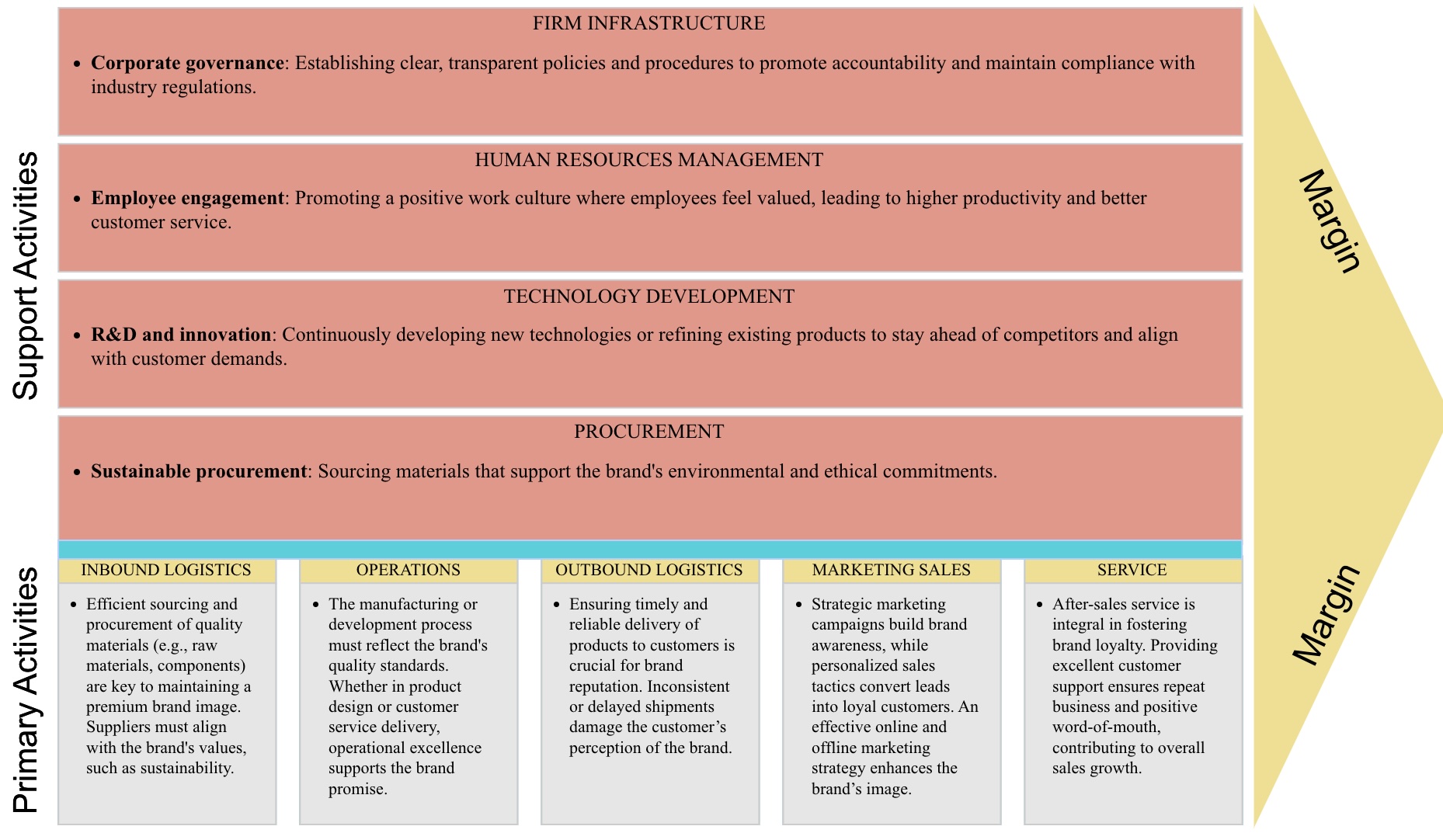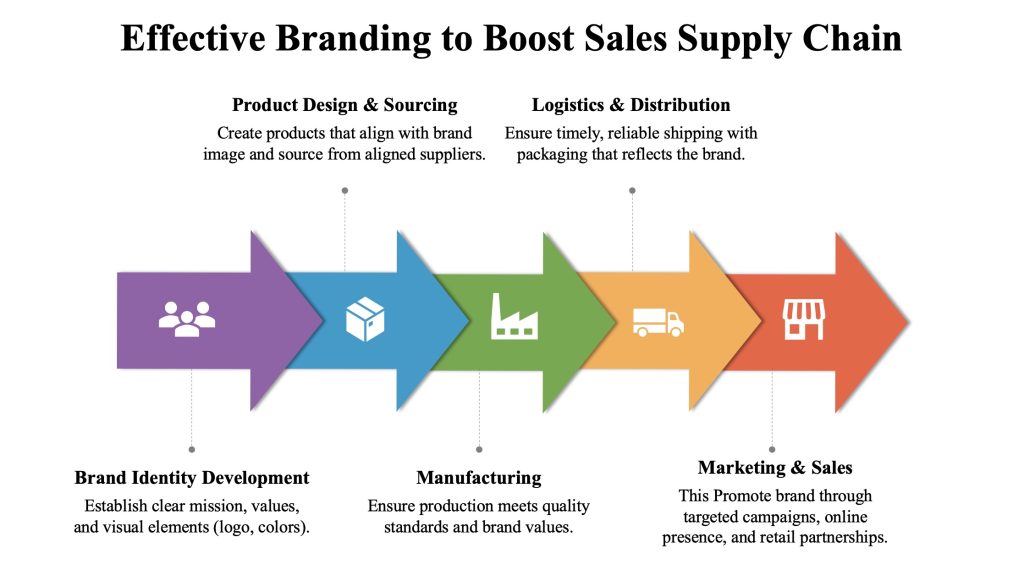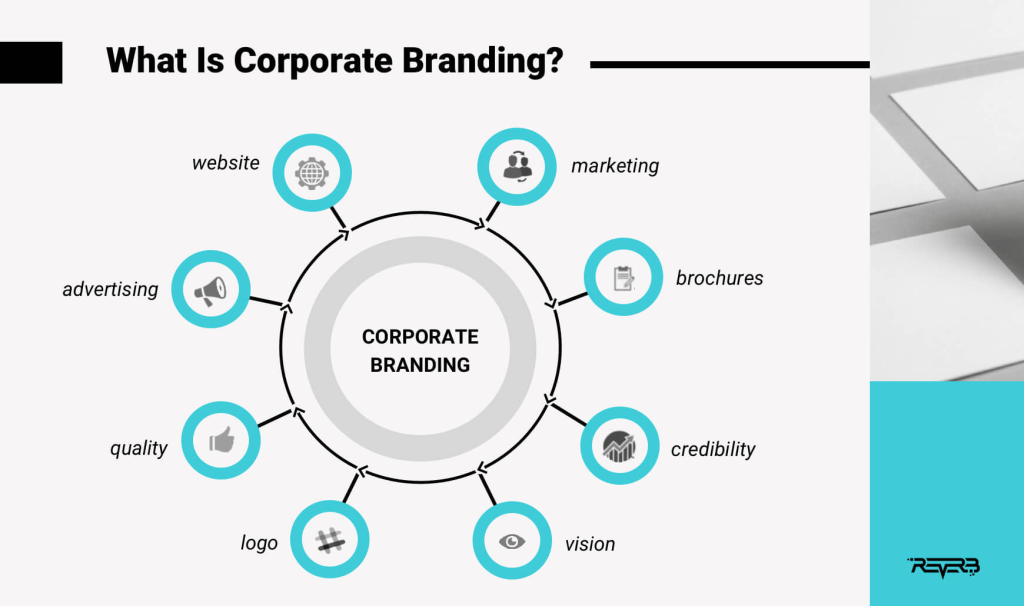Executive Summary
In today’s highly competitive market, branding has become an essential pillar for boosting corporate sales and driving long-term business success. Effective branding goes beyond creating a visually appealing logo and name; it involves positioning the company as a trusted entity, connecting emotionally with customers, and offering consistent value across all touchpoints. This article explores the methods corporations can employ to enhance their sales through strategic branding, focusing on the importance of market trends, stock performance, value chains, and supply chains. It further highlights introductory and advanced steps in branding, the challenges companies may face, and how to overcome them by setting clear goals.
General Information
Market Trends
- Personalization & Customer-Centric Strategies : Brands are using AI and data analytics to offer personalized experiences, understanding consumer preferences to deliver tailored marketing.
- Digital Transformation & Social Media : Social media platforms like Instagram, Facebook, and TikTok are driving brand awareness and engagement, reaching wider audiences.
- Sustainability & Corporate Responsibility : Consumers prefer brands that align with their eco-conscious values, making sustainability a key aspect of branding.
- E-commerce & Omnichannel Integration : Brands are enhancing sales by providing seamless omnichannel experiences through e-commerce websites and mobile apps.

Stock Performance
- Branding and Stock Market Correlation: Research consistently shows that companies with strong, recognized brands often perform better in the stock market. A well-established brand attracts more customers, builds loyalty, and allows for premium pricing. As a result, their financial performance tends to improve, directly influencing stock value.
- Case Studies:
- Apple: Known for its premium branding, Apple has consistently been one of the top performers in the stock market. Its brand loyalty and consistent product innovation contribute significantly to its strong stock performance.
- Coca-Cola: Another example is Coca-Cola, which maintains a significant market share due to its effective branding and global recognition. This stability is reflected in its stock performance over the years.

Business Model (Value Chain)
The branding value chain illustrates the key activities that contribute to building a strong, reputable brand. From sourcing high-quality materials and ensuring efficient operations to delivering exceptional customer service, each step plays a vital role in creating value for customers and strengthening brand perception. By aligning every stage of the value chain with the brand’s core values—such as sustainability, quality, and innovation—businesses can foster customer loyalty, enhance their reputation, and ultimately drive growth.

Business Environment (Supply Chain)
To build a strong brand and boost sales, it’s essential to have a supply chain that supports your brand’s values and message. From sourcing quality materials to ensuring consistent delivery and customer experience, each step plays a crucial role in maintaining your brand’s integrity and driving success. Below is a simplified supply chain to align with effective branding.

Advanced Information
Introducing Steps
- Define Your Brand:
Clearly articulate what your brand stands for. This includes defining your mission, vision, and core values. A strong brand identity helps customers connect emotionally with your business. - Market Research:
Conduct in-depth market research to understand consumer needs, preferences, and behaviors. Use this data to shape your branding strategy and ensure it resonates with your target audience. - Develop a Consistent Brand Message:
Ensure consistency in your messaging across all platforms—whether on your website, social media, or through customer service interactions. A consistent brand message reinforces customer trust and recognition. - Leverage Digital Platforms:
Utilize social media, SEO, and online advertising to increase brand visibility. Consider using influencer marketing or collaborations with other brands to expand your reach.

Amplifying Brand Impact Example
- Invest in Customer Experience:
A great brand is not only about the product but also the experience. Ensure that the customer journey—both online and offline—is seamless, user-friendly, and emotionally engaging. - Incorporate Innovation:
Continuously innovate to stay relevant in a competitive market. This could mean new product lines, entering new markets, or embracing new technologies to improve customer interaction (e.g., AR/VR experiences). - Engage in Corporate Social Responsibility (CSR):
Corporate social responsibility efforts that align with your brand’s core values not only improve reputation but also attract a loyal customer base that shares your values.
SASAL Can Support You
Insourcing
- If you’re looking to build and manage your brand internally, SASAL can support you with insourcing through our CSO Expert Guidance Service. Our Chief Strategy Officer will work closely with your team, providing tailored insights and strategic direction to ensure your brand vision is executed effectively and sustainably, all within your organization.
OUTSOURCING
If you’re unable to handle branding on your own or prefer to focus on other areas of your business, SASAL offers outsourcing services that cover everything.
PRACTICE
| Challenge | Goal | Term | How to Achieve |
|---|---|---|---|
| Market Saturation | Increase market share by 15% | 12 months | Focus on a unique value proposition, differentiate from competitors, target niche markets, and use competitive pricing strategies. |
| Brand Loyalty | Increase brand loyalty by 20% | 12 months | Implement personalized marketing, create a loyalty rewards program, improve customer service, and engage in community-building activities. |
| Budget Constraints | Generate a 20% increase in sales with a limited budget | 6 months | Use cost-effective digital marketing strategies such as content marketing, social media marketing, and influencer collaborations. |
| Brand Recognition | Boost brand recognition by 30% | 6 months | Execute PR campaigns, leverage influencer partnerships, enhance social media presence, and target specific markets to expand brand awareness. |
| Customer Retention Rate | Improve retention by 10% | 12 months | Invest in customer service improvements, introduce a personalized communication strategy, and build a customer loyalty program that enhances engagement. |
Additional Information and Resources
Look into agencies like Landor & Fitch or Pentagram for professional branding services that can help elevate your brand strategy.
Books:
“Building a StoryBrand” by Donald Miller
“Start with Why” by Simon Sinek
Online Resources:
HubSpot’s Marketing Blog (for branding strategies and trends)
Neil Patel’s Digital Marketing Blog (for in-depth SEO and branding insights)
Tools:
Canva: Design software for creating brand visuals.
Google Analytics: Measure the effectiveness of branding efforts.


